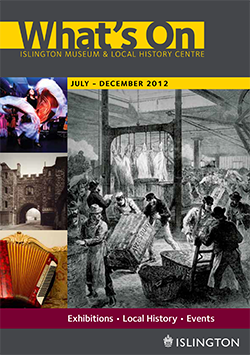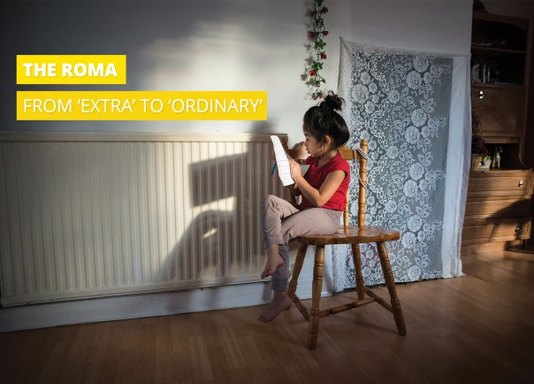2012 – A multi-media exhibition, ‘From India to Islington: A 1,000 Year Roma Journey’ at Islington Museum

This Exhibition aimed to enhance an understanding of Roma history and culture within British society. In preparation for the exhibition we have organised intergenerational sessions that focussed on ‘re-discovering’ and ‘re-evaluating’ Roma heritage, written and oral histories, which along with digital and photographic work by young Roma, created the content of the exhibition.
The exhibition acted as a link between present, past and future in relation to the place that the Roma community and their heritage have in Britain’s multi-cultural society, questioning what it means to be Roma in this context and opening this discussion to the public.
A programme that accompanied the exhibition included academic seminars, workshops for school children, music performances, art and craft sessions for local children, story-telling workshops, poetry reading and a seminar for professionals from Romania, Denmark and Britain co-organised with the Refugee Council.
Total numbers of people, who were participating in these events, was 168 plus an on-going flow of people visiting the museum on an everyday basis.
“The exhibition ‘From India to Islington’ puts light on Roma culture and history, which are usually ignored by many, causing intolerance and prejudice. It demonstrates that in order to fight intolerance, Roma culture should be more promoted and represented by the Roma themselves….The exhibition has been able to create a relationship between Britain and Roma heritage, by focusing on the past and present but also giving prospects for the future. Most of all, it was not only about the victimisation of the Roma but it showed positive aspects of their community.” (Aurele Bourin, University de Nancy).
The exhibition acted as a link between present, past and future in relation to the place that the Roma community and their heritage have in Britain’s multi-cultural society, questioning what it means to be Roma in this context and opening this discussion to the public.
A programme that accompanied the exhibition included academic seminars, workshops for school children, music performances, art and craft sessions for local children, story-telling workshops, poetry reading and a seminar for professionals from Romania, Denmark and Britain co-organised with the Refugee Council.
Total numbers of people, who were participating in these events, was 168 plus an on-going flow of people visiting the museum on an everyday basis.
“The exhibition ‘From India to Islington’ puts light on Roma culture and history, which are usually ignored by many, causing intolerance and prejudice. It demonstrates that in order to fight intolerance, Roma culture should be more promoted and represented by the Roma themselves….The exhibition has been able to create a relationship between Britain and Roma heritage, by focusing on the past and present but also giving prospects for the future. Most of all, it was not only about the victimisation of the Roma but it showed positive aspects of their community.” (Aurele Bourin, University de Nancy).
2014 – Roma: From “Extra” to “Ordinary” Exhibition at the Romanian Cultural Centre

In collaboration with the Romanian Cultural Centre, the Roma Support Group has organised the exhibition Roma – from ‘Extra’ to ‘Ordinary’.
In this exhibition, Romani history contrasted with the reality of everyday Romani life. It aimed to highlight both anti-Roma prejudice and the ordinariness of Roma people’s reality and activism, hoping to bring a new dimension to the debate surrounding the Roma from Eastern Europe.
In this exhibition, Romani history contrasted with the reality of everyday Romani life. It aimed to highlight both anti-Roma prejudice and the ordinariness of Roma people’s reality and activism, hoping to bring a new dimension to the debate surrounding the Roma from Eastern Europe.



